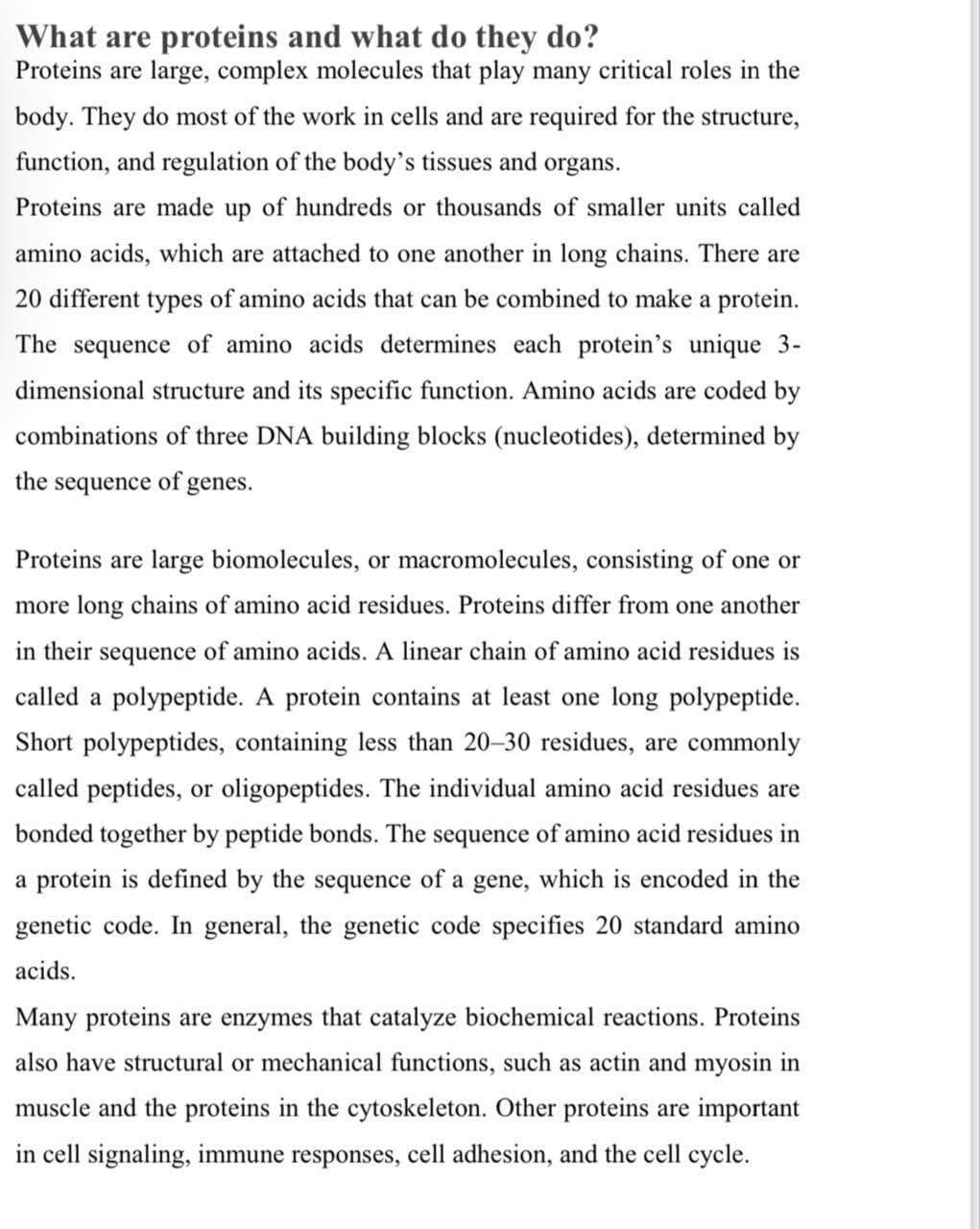Chapter5: Protein
Section: Chapter Questions
Problem 4SC
Related questions
Question
Hello sir, where does the answer to the question above end?

Transcribed Image Text:What are proteins and what do they do?
Proteins are large, complex molecules that play many critical roles in the
body. They do most of the work in cells and are required for the structure,
function, and regulation of the body's tissues and organs.
Proteins are made up of hundreds or thousands of smaller units called
amino acids, which are attached to one another in long chains. There are
20 different types of amino acids that can be combined to make a protein.
The sequence of amino acids determines each protein's unique 3-
dimensional structure and its specific function. Amino acids are coded by
combinations of three DNA building blocks (nucleotides), determined by
the sequence of genes.
Proteins are large biomolecules, or macromolecules, consisting of one or
more long chains of amino acid residues. Proteins differ from one another
in their sequence of amino acids. A linear chain of amino acid residues is
called a polypeptide. A protein contains at least one long polypeptide.
Short polypeptides, containing less than 20-30 residues, are commonly
called peptides, or oligopeptides. The individual amino acid residues are
bonded together by peptide bonds. The sequence of amino acid residues in
a protein is defined by the sequence of a gene, which is encoded in the
genetic code. In general, the genetic code specifies 20 standard amino
acids.
Many proteins are enzymes that catalyze biochemical reactions. Proteins
also have structural or mechanical functions, such as actin and myosin in
muscle and the proteins in the cytoskeleton. Other proteins are important
in cell signaling, immune responses, cell adhesion, and the cell cycle.
Expert Solution
This question has been solved!
Explore an expertly crafted, step-by-step solution for a thorough understanding of key concepts.
Step by step
Solved in 2 steps

Knowledge Booster
Learn more about
Need a deep-dive on the concept behind this application? Look no further. Learn more about this topic, biology and related others by exploring similar questions and additional content below.Recommended textbooks for you

